You just started a blog for your business.
You’re writing quality content as fast as you can, and you’re getting decent traffic. But for some reason, majority of your first time visitors don’t come back. At least that’s what Google Analytics’ data suggests.
Didn’t they like what you wrote? Weren’t you helpful enough?
They share your posts, so how come they don’t come back?
The Missing Link in Many New Websites
Then you read somewhere that as an authority, you should start collecting email addresses as early as possible. Like, right NOW. You read article after article touting the benefits of building an email list.
It will boost your engagement they say. It will help you sell more products and get to know your audience, they say.
So now you’re curious to give it a try.
But you have no clue where to start.
Your Yellow Brick Road to Building an Email List
Start here.
I’ve compiled 11 proven email list building tips from around the web then categorized them into beginner, intermediate, and advanced level advice.
Start with the easy tips that only take a few minutes to set up. Then progress into the intermediate strategies once you’re getting the hang of things. When you’re ready to invest more in building your email list, take a crack at the advanced strategies.
Beginner, Intermediate Advanced and Email List Building Strategies
Beginner
- Use a Feature Box
Remember those big rectangular boxes positioned at the top of a website? You know, the one usually offering a free e-book? It’s called a feature box. It contains a short copy convincing readers to give their email address in exchange for a free e-book or newsletter updates.
Derek Halpern, founder of Social Triggers, says he increased the email opt-in rate for his site by 51.7% using this strategy.
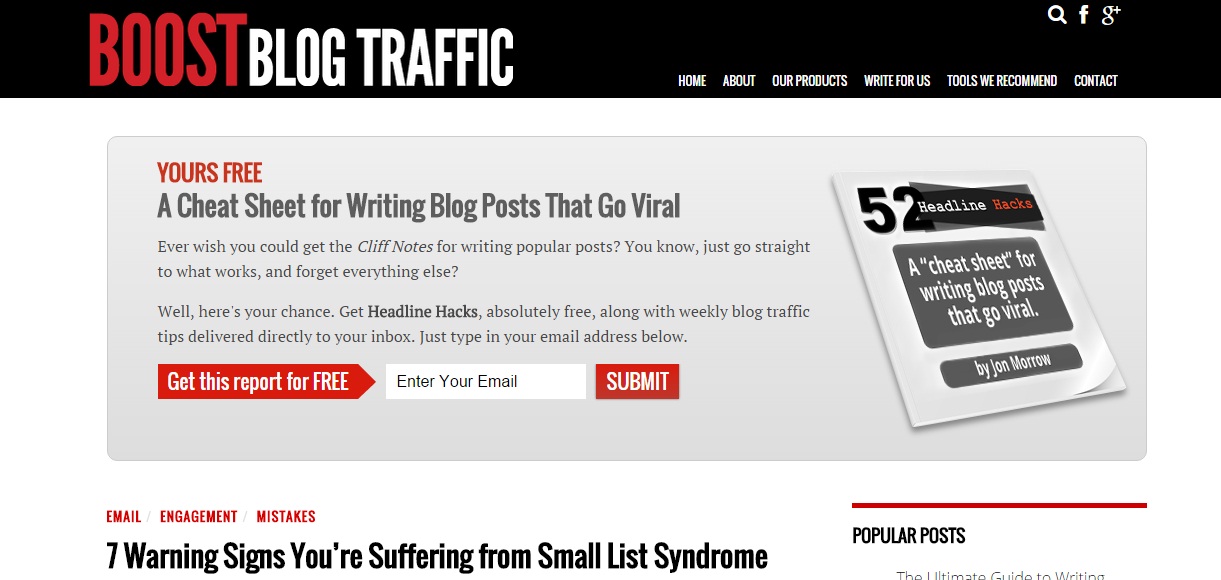
Notice how the feature box sits below the navigation bar, and at the top of every blog post to ensure people will read it before scrolling down.
Here’s another example of a feature box, this time without a free e-book or report.
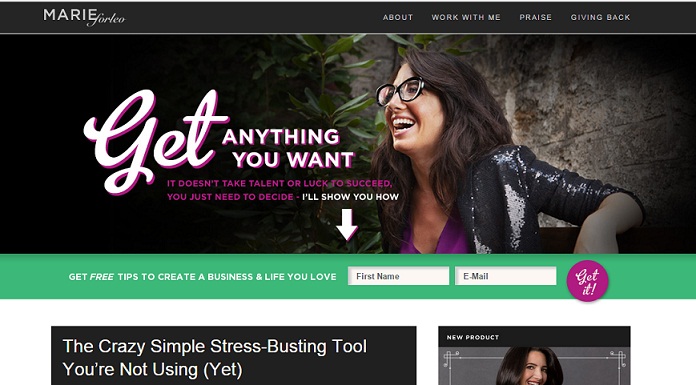
You can create a simple feature box of your own using SumoMe or Magic Action Box.
- Don’t Waste Your Sidebar
For some reason, many new website owners waste the top of their sidebar to tags and categories. While helpful for readers, these features do nothing to help you, the business owner.
Who’s to say they’ll come back of their own accord after they find what they’re looking for? There are hundreds of websites on any given topic, so it’s up to you to lure them back.
The human eye naturally reads left to right then top to bottom. So it’s only logical to prioritize what you want them to see first. Put the email opt-in box at the top of the sidebar. Then if you want to include categories, popular posts and other stuff, just put them below it.
Here’s an example of a sidebar opt-in box optimally placed on top of other widgets, such as the “about me” box.
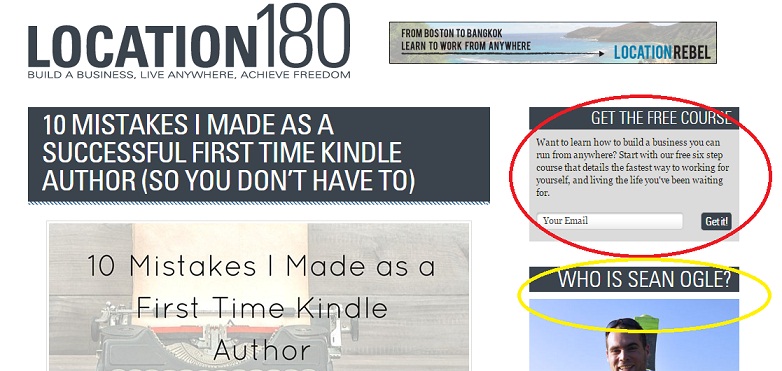
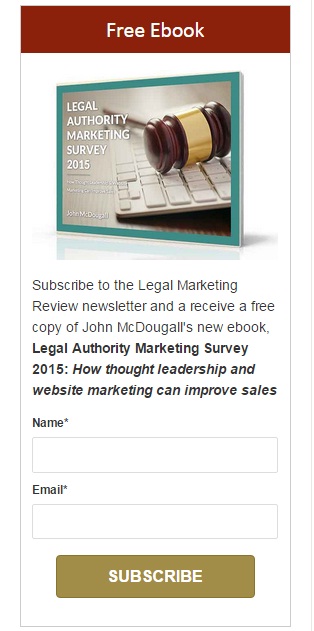 And here’s another example from Legal Marketing Review.
And here’s another example from Legal Marketing Review.
- Use a Welcome Mat or Welcome Gate
Your website is your business’s home in the virtual world. What better way to make it more inviting than a welcome mat, right?
Like a ‘welcome home’ rug, an online welcome mat greets first time visitors to your site with an irresistible free offer. It’s like a feature box, except it dominates the whole screen and only pops up for new visitors.
Of course, if you have both a welcome mat and a feature box, you can use the same freebie for both. Just vary the copy written in each one so it doesn’t look like a spammy pop-up. If you can give different freebies for each, that’s even better!
Here’s Make a Living Writing’s welcome gate.

For Mixergy, only the CTA button prompting you to “Get 9 Interviews Free” are visible. I suspect it was deliberately done to minimize indecision on the part of new visitors.
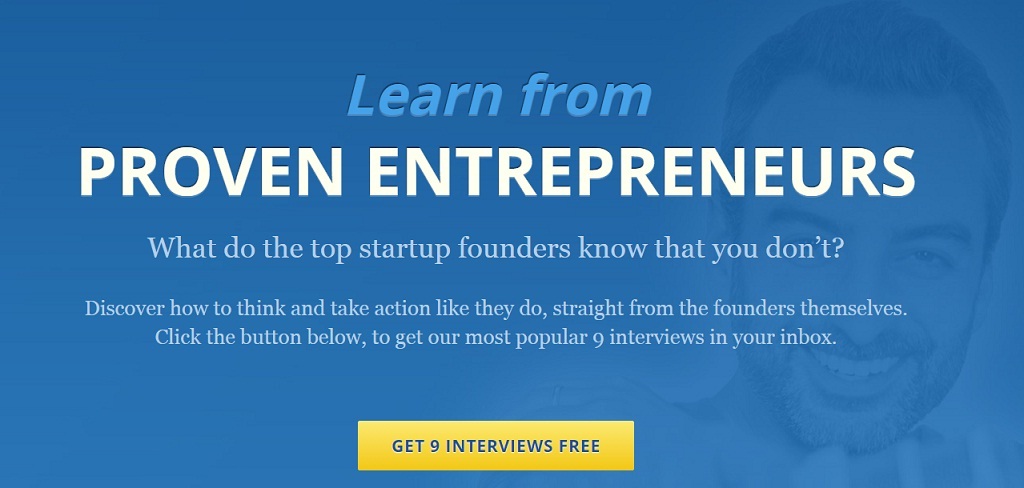
- Add a Sign-up Button to the Navigation Menu
A subtler, although less effective, way of getting more subscribers is adding a sign-up prompt on the website’s navigation menu.
It’s a good add-on strategy, but not something you should use on its own. You can use a direct CTA, such as “Subscribe,” or go with “Free Updates.”

- Ask Readers to Sign up at the Bottom of Every Blog Post
They say online readers prefer to scan. So it means someone who reads ‘til the bottom of your post must like your writing. If that’s really the case, don’t waste the opportunity!
Convert new readers into subscribers by putting an email sign-up box at the bottom of every blog post. You can use anything from a simple sign-up button, or a more noticeable sign-up box like the one from Social Triggers.


Intermediate
- Create an Irresistible, Gosh-Why-Is-He-Giving-It-Free Offer
Freebies are such a commodity now. Most of your visitors think twice before giving up their email address just to get ‘another free e-book.’
Sign-up bribes are still effective, don’t get me wrong. But for this strategy to work, your offer has to stand out from the mass of average Joe freebies out there.
First of all, stop thinking you have to write an e-book! While e-books are truly effective, they are not the only format for a giveaway. And don’t think of this as something you create just for the sake of having one.
Creating a genuinely helpful freebie takes time. It should be something your visitors will gladly pay for, if you weren’t such a nice guy to give it for free.
Need inspiration? Here are some amazing freebies:
- Free 28 Day Email Course on How to Become a Morning Person from Little Green Dot
- Copyblogger’s collection of 16 e-books and 20-part marketing course (okay, still an e-book but with 16x more value and content)
- Bidsketch’s sample proposal template
- Firepole Marketing’s Beacon Community (includes a forum and e-book series)
- Ask Existing Email Subscribers to Forward and Share Your Emails
While relatively easy to do, this strategy won’t make a noticeable impact in your numbers unless you already have a solid foundation of at least 1,000 opt-in subscribers to begin with. Emails harvested through LinkedIn or some other database won’t help.
Once you have that, it’s easy to add a “Forward to a friend” link in the text of your emails. This simple trick gives you access to more leads, who are more likely to sign up because of the referral.
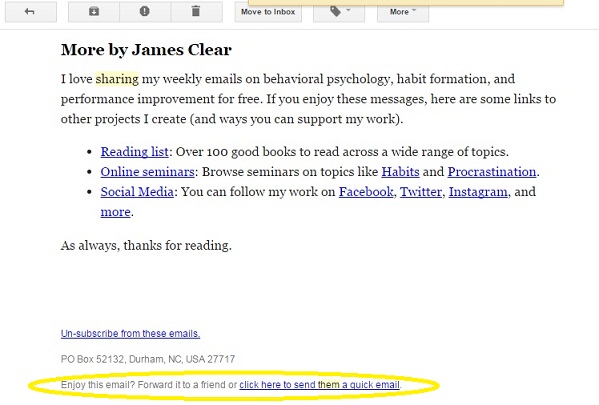
- Turn Non-Confirmers into Subscribers
Someone signs up to get your free organizing check-list. Then your trusty mail service sends an opt-in confirmation email. But a week passes and it’s still not confirmed.
Did he change his mind? Did he not want your free checklist, after all? Did he enter the wrong email? If you’re just starting out, such non-confirmers might drive you nuts.
Don’t over think it. Things happen. Your confirmation email might’ve landed in the junk folder, or the he forgot about it for whatever reason. Whatever the case, you owe it to him and yourself to re-send the confirmation email. This person already gave you his email address, so you have a better chance of converting him into a new subscriber.
Go to your email service program and search for unconfirmed email sign-ups in the past two days. Then just re-send the confirmation email to everyone on the filtered list. This process will only take less than fifteen minutes, but it can yield you anywhere from 5% to 20% more subscribers.
Advanced
- Include Social Proof in Opt-in Copy
This tip is easy to implement but like tip #8, you can’t do it until you have enough subscribers. And this time, 1,000 isn’t gonna cut it. You’ll need a number huge enough to shock people of how awesome your content is.
Would you be more likely to sign-up for a newsletter if you knew more than 205,000 people already did? Peer pressure is a strong motivator and its effects do not diminish online.
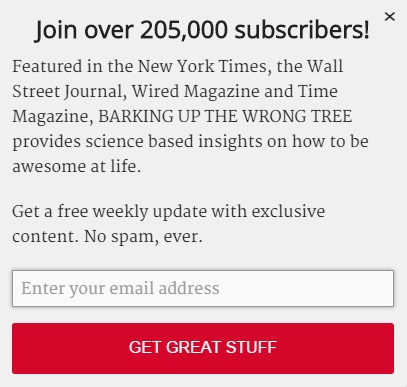
When other people in your tribe, group of friends, or professional affiliation, think a certain newsletter is valuable enough to be allowed in their inbox, your brain instinctively agrees. That’s exactly the tactic that convinced me to sign up for Linda Formichelli’s mailing list for freelance writers.

- Ask Commenters to Subscribe
Several plugins allow you to invite first-time blog commenters to a pre-determined page, such as a squeeze page set-up to collect emails.
Here’s an example of a page readers are redirected to after commenting on Yoast.com
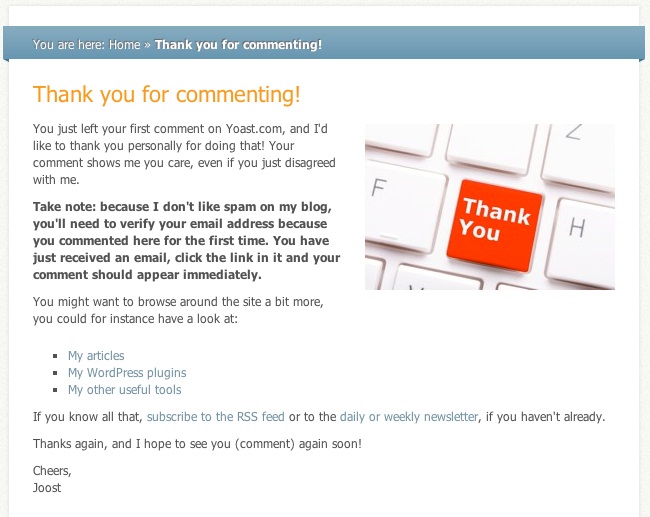
- Special Content Upgrade
Building your email list within the blog post is effective, because people are most engaged at the middle of the website (i.e. the blog post), not the headers and footers. Noah Kagan of SumoMe and OkDork credits this technique in a “daily email growth of (about) 30%.”
How can you take advantage of the increased engagement?
Offer readers a specialized freebie download. In this post at Backlinko, Brian Dean lures readers into signing up for his email list by offering a checklist for using content upgrades, the exact topic covered in the post.
After reading Dean’s helpful tutorial, readers will be primed to download his checklist so they can try it out for themselves, and so they don’t forget what they read. The freebie is a win-win for everyone.
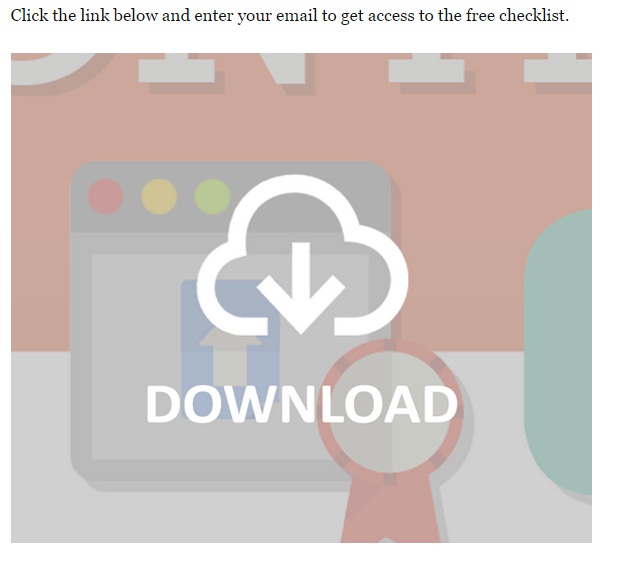
But don’t confine the content upgrade at the bottom of the post. You can insert it at the middle, too, like what Dean did.
Not the Only Email List Building Tips Around
Whew, I hope you’re still with me at this point. There are a hundred other ways you can grow your email list but I only included the strategies that really work so you’re not overwhelmed with options.
Quick Question:
Which of these methods are you using for your own site? Is there another strategy you’re using not listed here? Let me know in the comments.
